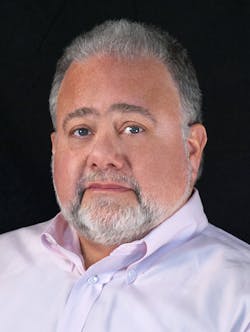Public- and private-sector partnerships are nothing new. Collaborative efforts between law enforcement and business districts, retail centers and entertainment venues have been around for several years in various forms. But as technology expands across the network, and threats manifest themselves in new and more venomous fashions, public and private cooperative efforts take on an even more important role.
Perhaps no region in America embraces that spirit of partnership better than Orlando, Fla., and the greater Orange County area. Yes, there is nothing Mickey Mouse in how law enforcement and private business protect their citizens’ interest in the land of Disney. Both the Orange County Sheriff’s office and the Orlando Police Department have created a spirit of trust and goodwill with its hotel and resort partners, retail establishments up and down the busy International Drive corridor, and of course, the fabled theme parks that epitomize the vibrant fabric of central Florida.
For almost two decades now, Orlando and Orange County law enforcement has made protecting the region’s brand as a tourist Mecca its number-one priority. “There is no question that our goal is to ensure that the economic engine of this city and county remains intact,” says Corporal Marcus Camacho, who has led the Tourist Oriented Policing Sectors, or TOPS program, for the county’s sheriff’s department since its inception in 1988. “Any venue you visit, whether it is for vacation or business, will have crime. Our job is to minimize it.”
With more than 150 deputies and officers from both the sheriff’s and police departments comprising the TOPS unit, they patrol more than 78-square miles along the main tourism corridor on foot, by bicycle and in patrol cars. Camacho admits that before their program was launched, they traveled to Las Vegas to study how that city had implemented its initiative. Now, the central Florida model ranks among the top programs in the country, and it is duplicated in other communities.
One of Orlando’s most popular venues benefiting from this community partnership is the upscale Mall at Millienia, which has become a world shopping destination, according to security director Gregg Moore. “We work very closely with local law enforcement to coordinate intelligence and information sharing — especially regarding emerging crime trends like credit card fraud and counterfeiting,” he says. “Our regular meetings provide a great opportunity to share crime statistics and trends. The relationship we have established here is a terrific model of how the private sector should work with the public sector.”
The 10-year-old mall is a showcase of marble and high-end architecture, not to mention a haven for retail stores catering to those on a caviar budget with stores like Bloomingdales and one of only two exclusive Rolex watch outlets in America.
Moore and his staff secure more than 150 stores and 1.2 million square feet. “We pay great attention to detail and spare no expense in protecting the shopping experience of our guests,” Moore says. “Our mantra is that fashion deserves a great environment. We really look at Millenia as being the fourth reason you should come to Orlando.”
Like his law enforcement counterparts who patrol the tourist corridor, Moore’s staff is very visible, inundating the parking areas with a presence that ensures the safety of both employees and customers. “The efforts we extend here have a very definite impact on our tenants’ shrink. We consider them partners, so their success is our success,” Moore says. “There are three elements of crime: motive, opportunity and means. We can’t address motive, but we can mitigate opportunity and eliminate means.”
Stephen Boyd, a loss prevention manager for one of the mall’s larger retailers, is extremely involved in maintaining his store’s high-profile relationship with Moore and the local law enforcement units to achieve his security goals. “We attend regular crime intelligence meetings with state and local officials to share the latest intel and best practices,” Boyd says. “It is an invaluable relationship.”
For Moore, who has been a security director in various healthcare and retail markets around the country since the 1970s, he admitted that the evolution of public- and private-sector cooperation has come full-circle. He no longer sees strained relationships between the two.
“It is a real symbiotic relationship today,” he says. “Both private security and law enforcement have the same goals, at least here in Orange County, and that is to ensure the best experience for our customers. So a little cooperation goes a long way.” ?
If you have any questions or comments for Steve Lasky regarding this or any other security industry-related issue, please e-mail him at
[email protected].



